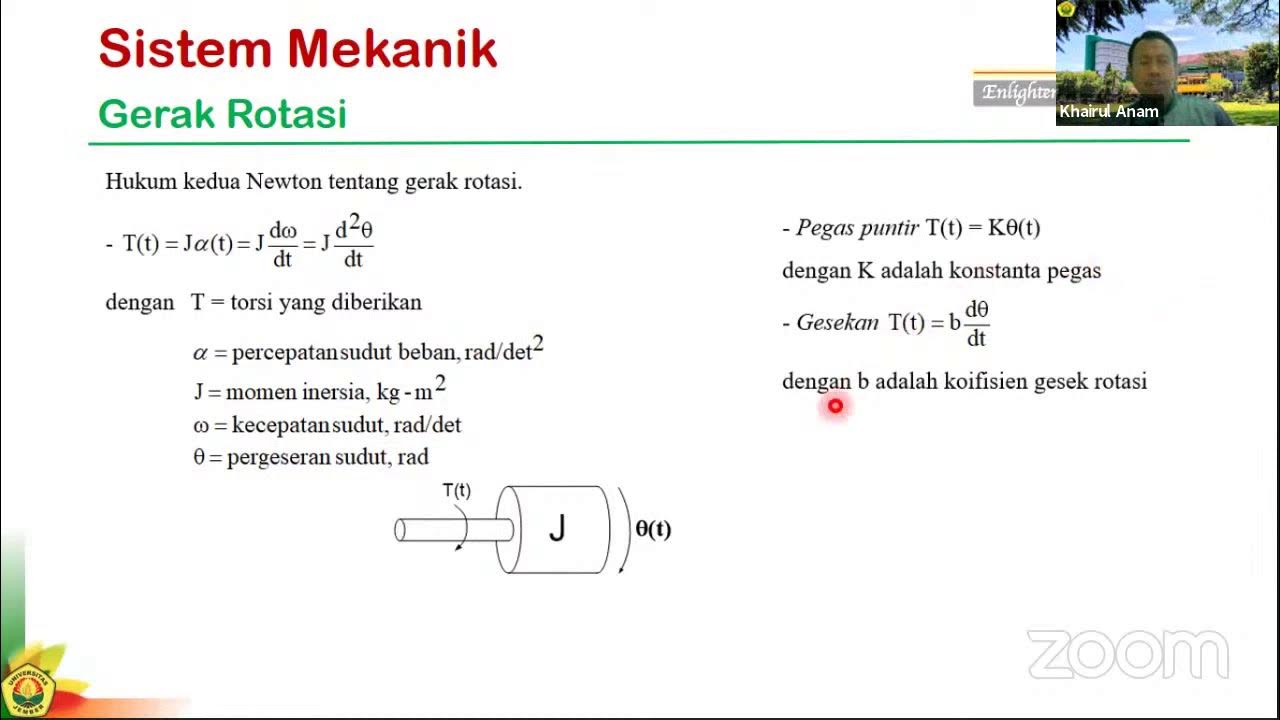Systems biology course 2018 Uri Alon - Lecture 8 A - Dynamic Compensation
Summary
TLDRThis lecture covers dynamic compensation in physiological circuits, focusing on robustness in biological systems. It explores how biological circuits maintain stable function despite natural variations, such as organ size control, glucose regulation, and resistance to mutations. The discussion moves from cell-level circuits to organ-level communication, particularly focusing on the glucose-insulin circuit. The lecture emphasizes how organs maintain their size despite continuous cell turnover, and how insulin sensitivity and resistance play a key role in glucose regulation. Real-life examples, such as diabetes and pregnancy-induced insulin resistance, are used to demonstrate these principles.
Takeaways
- 📚 The lecture focuses on dynamic compensation in physiological circuits, emphasizing the robustness of biological systems to natural variations.
- 🔬 Robustness in biological circuits is defined as the insensitivity to naturally occurring variations, which is crucial for precise functioning.
- 🐕 The lecture welcomes all species, highlighting the universal presence of physiological circuits in different organisms.
- 🧬 The discussion transitions from cellular to physiological levels, examining how organs communicate through hormones like insulin to maintain homeostasis.
- 🩸 Glucose homeostasis is critical for health, with the body striving to maintain blood glucose levels within a narrow range for optimal brain function.
- 💉 Insulin, produced by the pancreas, is central to glucose regulation, prompting cells to take up glucose and lower blood sugar levels.
- 🏋️♀️ Insulin sensitivity varies and can be influenced by factors like exercise, infection, and obesity, affecting how effectively insulin works.
- 📉 The body can compensate for changes in insulin sensitivity, maintaining glucose dynamics despite significant variations in this parameter.
- 🤰 Insulin resistance is a common issue, especially in Western societies, and can be influenced by factors like obesity, lack of exercise, and aging.
- 📊 The classic glucose tolerance test is used to measure how the body handles glucose, providing insights into insulin sensitivity and glucose regulation.
Q & A
What is the main topic of the lecture?
-The main topic of the lecture is dynamic compensation in physiological circuits, focusing on robustness in biological systems and how it applies to the communication between organs in our body.
What is meant by robustness in the context of biological circuits?
-Robustness in biological circuits refers to the property where these systems remain functional and maintain their performance despite naturally occurring variations.
What is the concept of 'network motifs' mentioned in the lecture?
-Network motifs are recurring circuit elements that carry out different computational functions within biological networks.
How does the concept of exact adaptation apply to bacterial chemotaxis?
-Exact adaptation in bacterial chemotaxis refers to the ability of bacteria to maintain a constant tumbling frequency despite changes in their environment, such as the presence or absence of food.
What is the role of insulin in the body as discussed in the lecture?
-Insulin is a hormone that stimulates the uptake of glucose from the blood by cells like muscles, fat, and liver, thereby helping to regulate blood sugar levels.
What is insulin sensitivity and why is it significant?
-Insulin sensitivity refers to the effectiveness of insulin in promoting glucose uptake by cells. It is significant because it can vary under different physiological conditions and is a key factor in glucose homeostasis.
How does the body maintain a stable organ size despite cells constantly dividing and dying?
-The body maintains stable organ size through a balance between cell division and cell death, ensuring that the overall size of organs remains constant throughout adulthood.
What is the glucose tolerance test and why is it important?
-The glucose tolerance test is a procedure used to determine how well the body processes glucose. It is important for diagnosing conditions like diabetes and understanding how the body handles glucose after a meal.
What are some factors that can influence insulin resistance?
-Factors that can influence insulin resistance include obesity, lack of exercise, aging, infections, and certain hormonal changes such as those that occur during pregnancy.
How does the body compensate for changes in insulin sensitivity?
-The body compensates for changes in insulin sensitivity by adjusting the amount of insulin produced and secreted by the pancreas, as well as by tuning the sensitivity of cells to insulin.
What is the minimal model for glucose-insulin dynamics mentioned in the lecture?
-The minimal model for glucose-insulin dynamics is a mathematical model that describes how glucose levels in the blood change over time in response to insulin and other factors, such as meal intake.
Outlines

Этот раздел доступен только подписчикам платных тарифов. Пожалуйста, перейдите на платный тариф для доступа.
Перейти на платный тарифMindmap

Этот раздел доступен только подписчикам платных тарифов. Пожалуйста, перейдите на платный тариф для доступа.
Перейти на платный тарифKeywords

Этот раздел доступен только подписчикам платных тарифов. Пожалуйста, перейдите на платный тариф для доступа.
Перейти на платный тарифHighlights

Этот раздел доступен только подписчикам платных тарифов. Пожалуйста, перейдите на платный тариф для доступа.
Перейти на платный тарифTranscripts

Этот раздел доступен только подписчикам платных тарифов. Пожалуйста, перейдите на платный тариф для доступа.
Перейти на платный тарифПосмотреть больше похожих видео

Systems biology course 2018 Uri Alon - Lecture 8 B - Dynamic Compensation

SK#2c: Pemodelan Sistem dengan Persamaan Differensial

A.C. CIRCUIT | A.C. FUNDAMENTALS | COMPLETE STUDY OF PURE A.C. CIRCUITS | LECTURE 3 IN HINDI

IPA Kelas 9 : Listrik Dinamis 3 (Rangkaian Hambatan Seri dan Paralel)

Mod 01 Lec 02 Biological Information Systems

Analog Circuits | Introduction of Analog Circuits | AKTU Digital Education
5.0 / 5 (0 votes)
